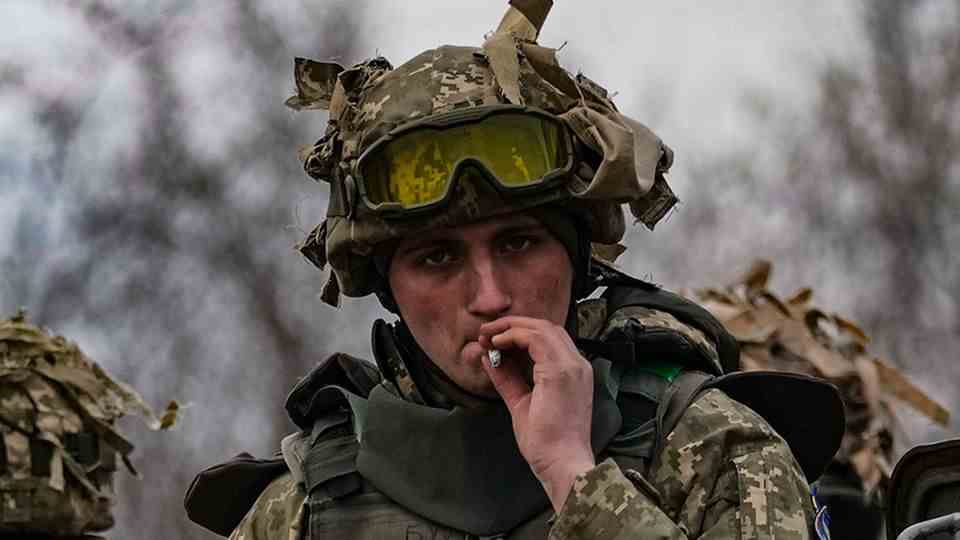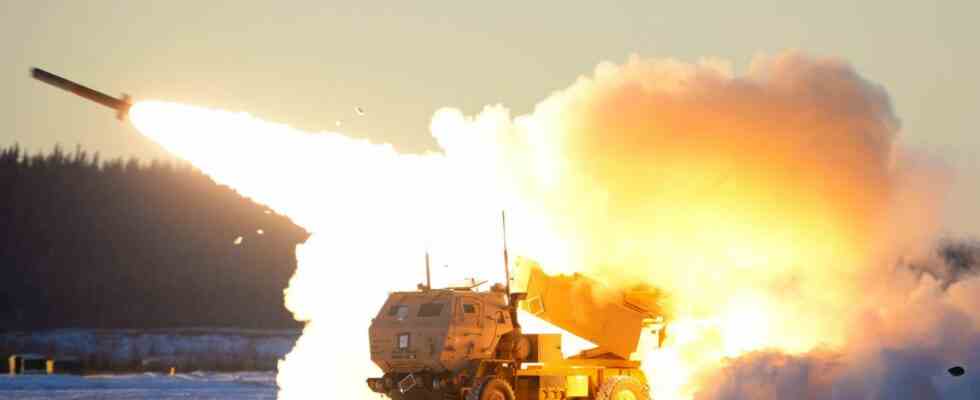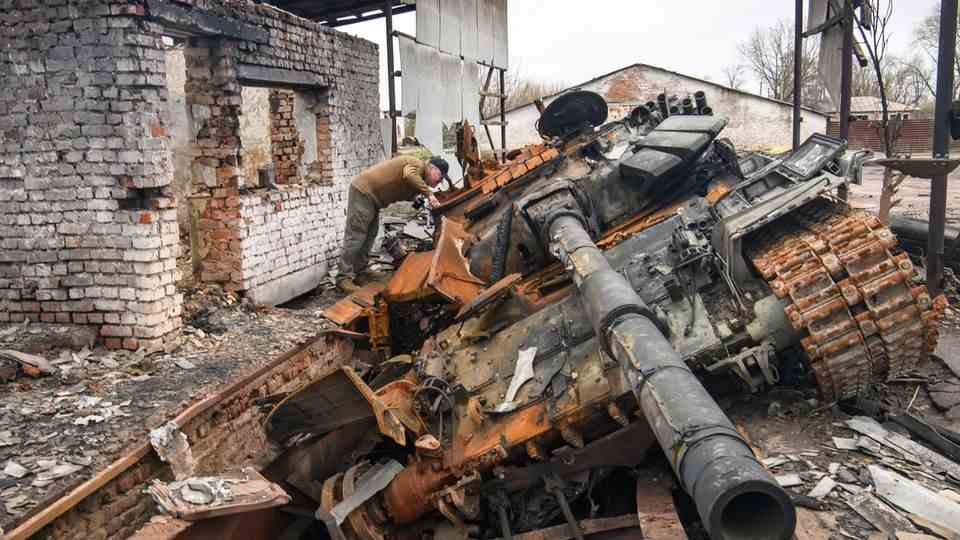Every week new effective weapons arrive in Ukraine from the West – very slowly and almost imperceptibly the tide is turning. There is a strategy behind it.
The longer the war in Ukraine lasts, the more effective weapons Ukraine will get from the West – mainly from Great Britain and the USA. One thought suggests itself: Why are these weapons only coming now? If they had been sent into the combat zone earlier, around April, wouldn’t the war have been very different?
And the answer is yes: If Ukraine had received weapons comparable to the HIMARS multiple rocket launchers in April, the Russian Donbass offensive would have been massively hampered. The Russians’ gains in territory would probably be even more modest than they are today. And more importantly, far fewer Ukrainian soldiers would have died because the Russians would not have had the ammunition for continuous artillery fire.
The hesitancy of Western leaders is certainly also responsible for this delay. Germany’s reluctance, as the most important power in Western Europe, is likely to have had a dampening effect on other countries as well.
Why so late?
But there are other reasons too. First there are technical-military ones. First of all, these weapons must be available. And if that’s the case, be brought into combat-ready condition. In addition, the Ukrainian soldiers are trained and the appropriate ammunition is provided. Nobody in the West expected such a long war with the uninterrupted use of artillery and long-range weapons. When it comes to intelligent homing ammunition, many states themselves have less than the bare minimum in the magazine. In the fighting in the Donbass, on the other hand, there is literally “all guns” firing. So it’s not enough to deliver heavy weapons, you also have to develop a viable concept for the logistics – spare parts, maintenance and ammunition. The example of the Gepard anti-aircraft tank shows how difficult it can be to even procure ammunition – since the strictly neutral Swiss government blocks the delivery of standard ammunition here.
In addition, the weapon systems are networked with different levels of complexity. On the one hand there are weapons like manpads or anti-tank missiles. They are delivered in a transport container with their starter. Another has additional rockets. And with that, the system is fully operational all by itself. But even with an infantry fighting vehicle, it gets complicated. His weapons can work without further help. But for an armored personnel carrier you need service personnel and spare parts. In addition, a solution must be found for communication if the crew in the western IFV is to communicate with the Soviet models of Ukraine. When it comes to ranged weapons, things get even more complex. Here reconnaissance, target data, target observation and rocket launchers must be combined in order to achieve the results achieved by the HIMARS launchers.
There are therefore technical and military reasons why these weapons are coming to Ukraine only gradually. But the droplet dose delivery has a psychological component. The use of Western weapons is to be increased very gradually in order to prevent Russia from further significant escalation. Mainly from an attack on NATO facilities that work for the Kiev military but are not in Ukraine. And there is also potential for escalation in Ukraine. The destruction of the government district in Kyiv is often mentioned. Or a systematic destruction of the nodes of civilian infrastructure across the country.
An imperceptible escalation
With the West increasing the quality of its aid every 14 days, Putin finds himself in the role of a frog in a teacup. The imperceptible but steady increase in temperature does not allow the frog to react, it is slowly being boiled in the water. If you simply poured hot water on it, it would save itself with a jump. That’s why rocket launchers with a range of 80 kilometers will be delivered first. It is now clear that the US has also supplied longer-range weapons. Missiles with a range of 180 kilometers that can attack radar stations, and also long-range missiles for ground targets, which were used to attack the bridges from Crimea to mainland Ukraine.

Wait until the opponent is exhausted
Another point stems from classic military strategy. It states that an offensive is most likely to be stopped when it has peaked and exhausted itself. Applied to Ukraine, this means that Kyiv could not have successfully stopped Putin’s fresh troops in the spring. In the Donbass, they were engaged in a battle in which they were only able to gain ground very slowly – in an environment that favored the defenders due to the fortifications of all settlements. Even though Kyiv has lost more and more of these villages and towns that have been converted into fortresses over time, the effort involved in conquering them is enormous. In the Donbass, the Russians have not made any real “breakthrough” – having captured one line of defense, they always faced the next. The losses in men and material such as tanks and ammunition are very high calculated per kilometer of advance.
For a few weeks now, with the help of the United States, Kyiv has been targeting the valuable fillets of Putin’s army. The ammunition stores, the command posts, the modern and dangerous pieces of equipment. Without a decisive gain, the Russian forces are exhausted. So far, Russia can still track material, but this is even more outdated than the tanks and vehicles at the beginning of the war.
The hope: Russia’s armed forces are becoming weaker and their equipment is falling more and more to the level of the 1960s. Until their advance comes to a standstill. And then – according to the classic teaching – would be the right moment for a counter-offensive: if possible with fresh forces that have been saved and repositioned until then, and equipment that is as modern as possible. But even in theory, this strategy has a blind spot: the troops that are supposed to slow down and weaken the Russian offensive are deliberately sacrificed. They are only reinforced with the bare essentials to save the rest of the forces for the counterstrike.
uncertainties in strategy
This strategy is based on assumptions. The first is that the attrition of the Russian armed forces is significantly higher than that of the Ukrainian ones. In particular, that more Russians fall than Ukrainians. Ukraine receives weapons from the West but no experienced soldiers. For a counterattack, however, at least the skeleton of the newly formed troops must still consist of veterans.
The second question is: will Kyiv also get enough equipment to supplement its army and raise new troops with the reservists? And that goes beyond “highlights” like the HIMARS. At the beginning of the war, Kyiv had thousands of Soviet-era armored vehicles, and it will not be possible to replace them if five and twelve tanks continue to be supplied.
The central question remains: Are the sanctions so effective that Russia can no longer track modern weapons? Without the import of electronic components, the armaments production of all reasonably modern systems will stop. When the stocks are exhausted, Moscow cannot continue the war with any prospect of success. But many countries around the world do not participate in Western sanctions. In particular, open or covert trade in semiconductors cannot be controlled if Russia switches to civilian components. It is also to be feared that states like Iran will openly support Russia with missiles and combat drones.
China remains the greatest uncertainty. A country from which Russia is currently not getting weapons. But should Beijing change its mind to avert Moscow’s defeat, China’s industrial capacity could turn the tide in an instant.



